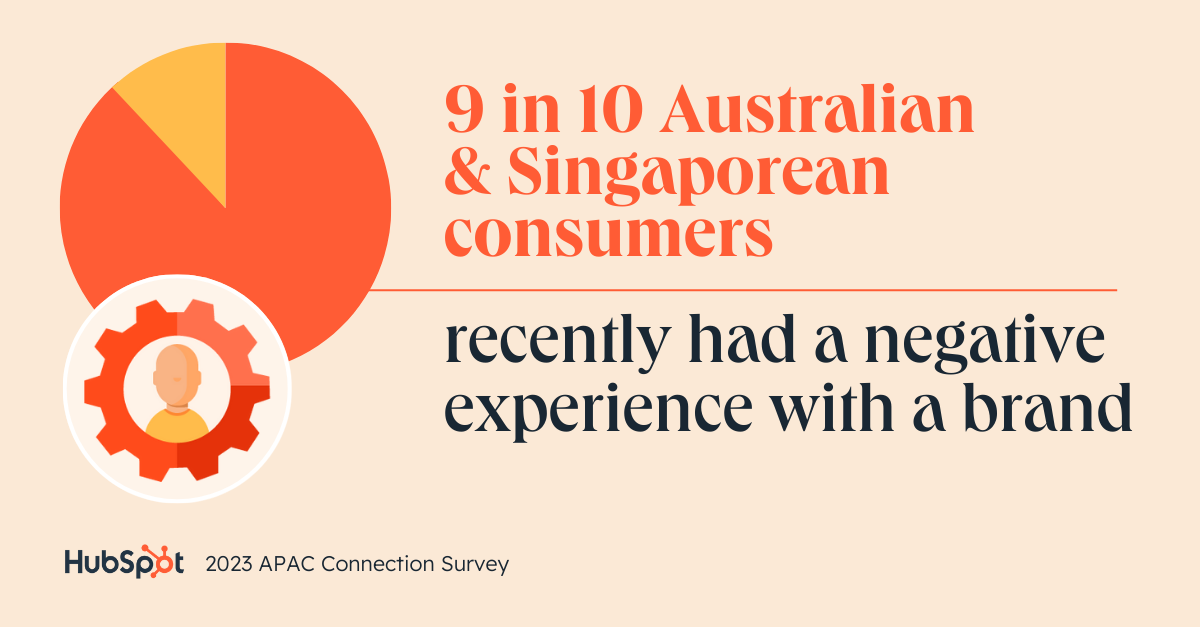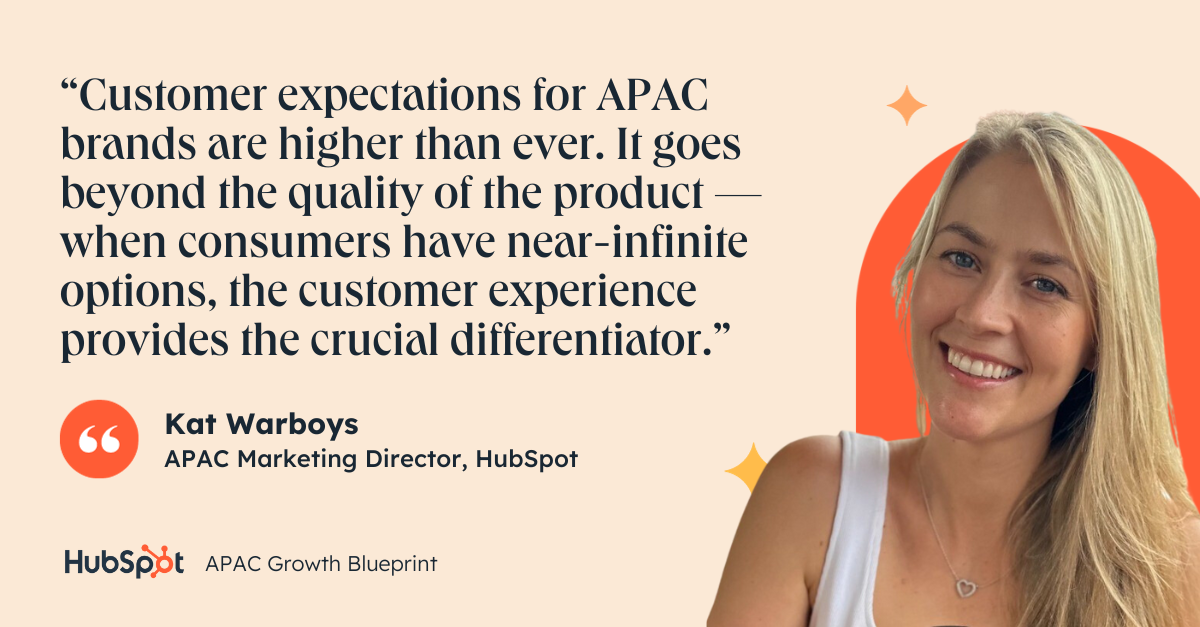When there’s a lack of connection between consumers and brands, negative experiences follow. B2B and B2C customers in APAC are increasingly reporting negative experiences with brands — and they’ve never been quicker to choose a new company to support if they’re unsatisfied with an experience.

What’s causing the disconnect between consumers and brands? They’ve had bad experiences with products, marketing interactions, and customer service. They’re frustrated when they receive spammy, irrelevant messages, and they’re analysing purchases more closely in a time of inflation — which means they’re more hesitant to buy, and faster to churn.
Why are B2B and B2C Consumers Having Bad Experiences with Brands?
On the B2B side, the APAC marketing technology (martech) landscape is growing like crazy. The average scaling company uses 200+ SaaS tools, and with so many options, consumers have higher expectations for solution providers. These providers not only need to be best-in-class, but they need to work seamlessly with their existing platforms.
And for B2C consumers — they’re dealing with inflation, so every purchase counts. The #1 complaint among B2C customers in Australia and Singapore is that brands spam them with irrelevant marketing. And in general, APAC consumers feel that customer support has become an afterthought.
APAC Consumer Expectations are at an All-Time High
Less than 40% of consumers in Australia and Singapore feel that brands are eager in providing best-in-class customer support and experiences. 
Leaders in APAC are feeling the disconnection more so than their North American counterparts
Brands with HQs based in the US or elsewhere may need to advocate for additional CX resources in-region. Consumers in APAC are harder to reach and looking for a better experience — not more products. To combat this, businesses need to prioritise a connected experience and align internal teams to meet customer needs based on market level insights.
“Consumers in Asia-Pacific are increasingly focusing on ‘better’ rather than ‘more’,” observes Matthew Crabbe, Regional Director, Asia-Pacific, Mintel Trends.
B2B Consumer Expectations in APAC
In APAC, B2B buyers want a white glove experience — when they decide to invest in a new platform, they want to know that it’s going to be the right fit from the start. In both Australia and Singapore, B2B consumers want brands to know about their specific organisation and how the solution will meet their needs.
In addition to wanting a best-in-class customer experience, Australian B2B buyers choose certain brands over others because the brand chooses convenient channels for communication.
Across APAC, a superior CX is a strong way to stand out against competitors and bring in new users to convert into loyal customers.
By elevating the customer experience, Australian Life Insurance improved market share by 21%, cut lapse rates by 1%, and increased advisor NPS scores from -30 to 14 in twelve months. “The final piece of the CX puzzle was a heavy investment in digital accessibility.”
And Advance Intelligence Group, founded in Singapore, has grown to have offices in 12 countries. They got there by “respecting the culture of the target market and local user habits.”
B2C Consumer Expectations in APAC
On the B2C side, Both Australian and Singaporean consumers seek out brands with highly competent and approachable staff. But Australian consumers also value a best-in-class customer experience, whereas Singaporean consumers seek out brands that have channels they can easily interact with.
Australian tech giant Canva built their platform around enabling access to design tools for everyone. Founder and Chief Product Officer Cameron Adams shared how the Canva team has learned to build a truly valuable product:
- Constantly listening to your community
- Identifying and adapting to changes in market trends
- Revitalising your product or service with new, compelling experiences that today’s communities need (or don’t yet know they need)
In Singapore, NinjaVan has rapidly grown to become a unicorn. Founder and CEO Chang Wen Lai and his business partners identified a gap in the logistics market in Southeast Asia and prioritised the customer experience. “To me it’s very clear: Focus on the people, focus on our customers, and build services around them. Do all that, you will get profitable,” Lai shared with CNBC.
Get the in-depth data and insights on what customers expect from brands today
Dig deeper into the data from our research and discover how to grow in APAC with our fact sheets, and infographics on how disconnection may impact your business.